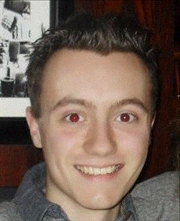Tutor HuntResources Physics Resources
What On Earth Is Quantum Physics??!
A brief introduction to quantum physics...
Date : 12/08/2015
Author Information

Uploaded by : Robert
Uploaded on : 12/08/2015
Subject : Physics
That`s certainly what many physicists thought at the start of the 20th Century; the likes of Max Planck, Niels Bohr and even Albert Einstein were stumped, confused and in disbelief about the wacky world of quantum physics. The very basic Laws of Physics that they had studied, and based years of their lives working with and refining were completely, catastrophically wrong.
In year 7 and year 8, you almost certainly will have learned that most of the world that we live in is made up of little pieces, or particles called "atoms," and that inside these atoms there are other, smaller particles called protons, neutrons and electrons. These particles are arranged so that there is a "nucleus" in the middle made of protons and neutrons, which is surrounded by electrons that whizz around in circles around the nucleus. These particles behave in a similar way to little tennis balls; they can bounce off things and crash into things, knock things over and drop to the ground, all because they have something called "momentum".
You`ll also probably have learned that light is a wave - a sort of "wiggle" in space - which, depending on its wavelength (or frequency) can have different colours throughout an entire spectrum, most of which we can`t even see: Radio waves, Microwaves, Infra-red waves, Visible light (the stuff our eyes can detect!), Ultraviolet waves, X-rays and Gamma rays. All of these different sorts of waves have different uses, depending on how much energy they have: microwaves can cook food and send messages between mobile phones, ultraviolet light makes white clothes "glow" purple and X-rays can take...well, X-rays!
These are probably the two most basic ideas that physics was based upon in the late 1800`s, and scientists thought that they`d found pretty much everything that there was to find. There were just a couple of problems that these light waves and tennis-ball particles couldn`t explain...and the explanation that scientists came up with completely changed how we think about the world.
Max Planck was a German physicist who was working for an electronics company, trying to figure out how he could get the maximum amount of light out of a light bulb when he stumbled across a problem. The solution to his problem was to suggest that the energy provided by the light waves came in "packets" which couldn`t be split up: you can`t have half of a packet of energy. A few years later, Einstein took Planck`s idea and used it to explain something called the "Photoelectric Effect" (which is explained in A Level physics) and named the packets of energy "Photons."
Photons behave in a very peculiar way. While they are made up of the energy from light (which is a wave), they behave exactly like we imagined particles to behave...as though light is both a wave AND a particle. So even though light can be bent (or "diffracted") around corners and reflects and refracts just like a wave, it can also bounce off things like a particle and the photons that make up light have some momentum!
Now then, you might be thinking that if waves can behave like particles, can particles behave like waves too? That`s exactly what a French PHd student called Louis de Broglie wondered...and it turns out that in certain conditions, what we once thought of as particles also behave like waves! It`s very rare to actually see it happen, but in certain circumstances, if the speed of an electron is just right, it can diffract just like light does and go in completely random directions.
This - understandably - terrified Einstein, Planck and many other physicists at the time. None of them believed that it was really possible, and tried desperately to think of another explanation for the problems...but no other solution was found. On the other hand, Niels Bohr - who was a physicist from Denmark - used the idea of photons to explain why electrons don`t spiral into the nucleus of atoms and why ultraviolet light makes white clothes glow purple. The once scary and almost unbelievable idea that things could be both particles and waves was being used in more and more ways to explain many things that previously couldn`t be understood.
In more recent years, quantum physics has evolved and changed into many different forms: quantum mechanics, quantum electrodynamics and quantum chromodynamics, quantum computing...the list goes on. It is still - after more than 100 years - at the forefront of physics, and we are still finding new and exciting uses for quantum physics. We can now produce situations where things can be in two places at the same time, where information can travel instantaneously (even faster than light!) and where we can fire particles literally THROUGH stuff...the possibilities and uses of quantum physics are practically endless, and really exciting and interesting for physicists to discover.
This resource was uploaded by: Robert
